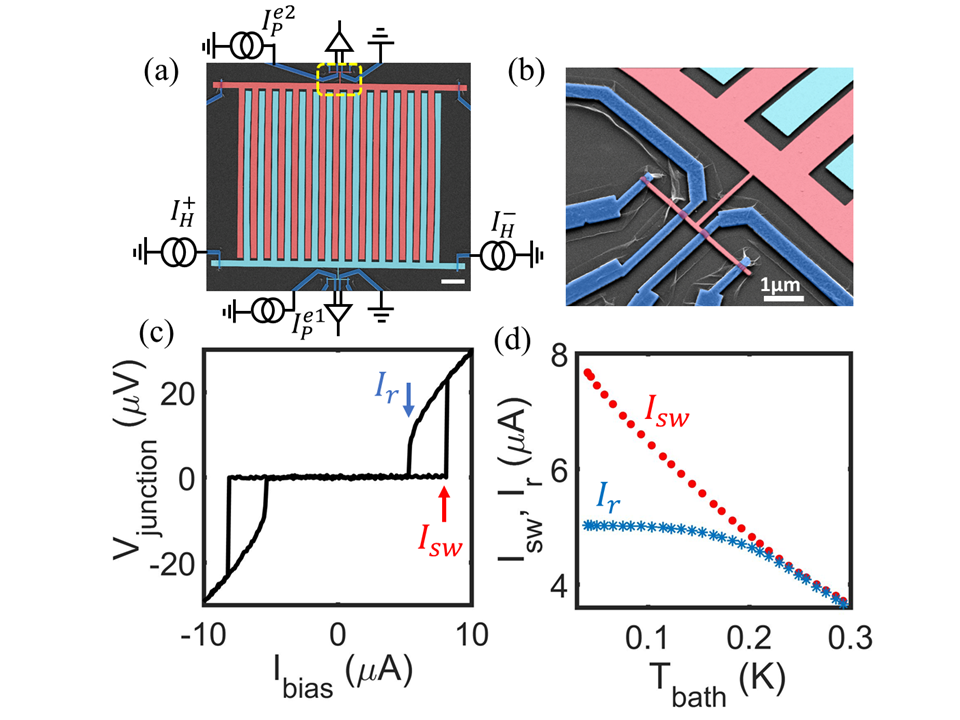Josephson junction is a junction between two superconductors, which can carry dissipationless current. Typically this current can be expressed in the form IC(T) sinφ, where φ is the difference between the phases of the order parameters of the two leads. The critical current IC(T) is temperature dependent, which provides a mechanism of measuring temperature with this type of junctions. In Fig. 1 we present the schematics of our recent experiment. Here we have used superconductor – normal metal – superconductor Josephson junction (Fig. 1b) because for this type of the junction the critical current remains strongly temperature dependent even at low temperature (Fig. 1d). Current voltage characteristics of the Josephson junction has two branches – dissipationless superconducting branch, located at zero bias voltage, and usual dissipative branch (Fig. 1c). If one gradually increases the bias current from zero to higher values, the junction first stays on the superconducting branch and then switches to the resistive branch at certain value current Isw. Although this switching current is random, it always stays close to the critical current IC(T) and, after appropriate calibration, allows us to measure the temperature of a big copper film connected to the thermometer (Fig. 1a,b).

Figure 1. (a) SEM images of a device and its measurement circuit: Ag (cyan and pink) and Al (blue); scalebar 4 microns. (b) Zoom of the dashed yellow area in (a) shows the Josephson junction thermometer. (c) I-V curve of the thermometer shows hysteresis at 60 mK. (d) Temperature dependence of the switching current Isw and re-trapping current Ir.
With this thermometer we have investigated fast relaxation of the temperature of the copper film after an initial heating pulse (Fig. 2). The information about temperature relaxation time, which we have obtained, is very important for the development of fast radiation detectors. Josephson junction thermometer is particularly convenient for this type of measurements since it operates at low bias and does not produce additional heating of the copper film.

Figure 2. (a) Electron temperature of the metal film in response to a heating pulse with the bath temperature varying from 41 to 157 mK. tdelay is defined as the time interval between the heat pulse (black) and the probe pulse (blue). Probe pulse width s1 and read-out pulse width s2 are set to 2 microseconds and 1 millisecond, respectively. (b) and (c) are zoom-in of black and red squares in the panel (a) with the bath temperature of 41 mK.
[1] L. B. Wang, O.-P. Saira, and J. P. Pekola. Fast thermometry with a proximity Josephson junction, Appl. Phys. Lett. 112, 013105 (2018).